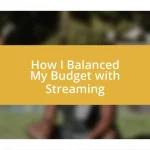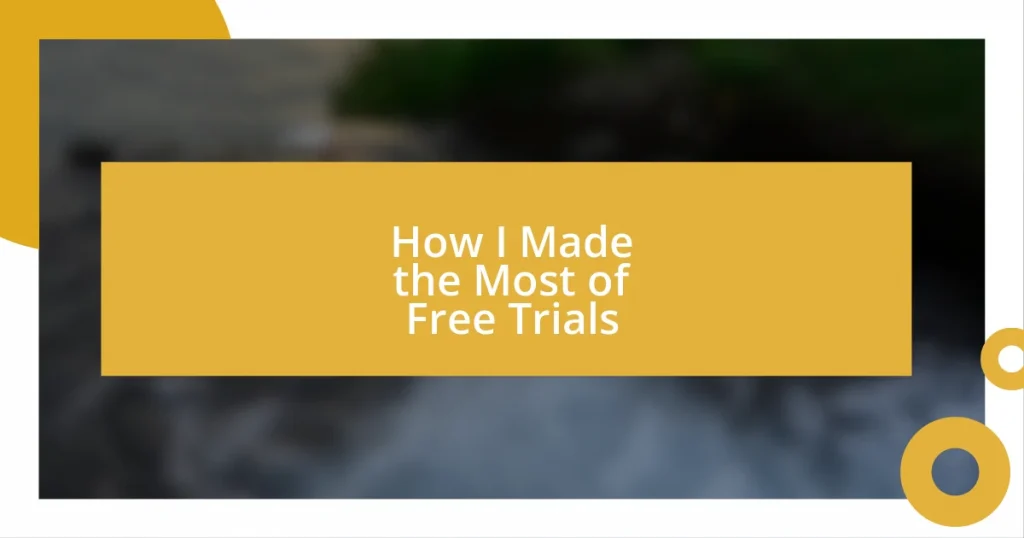Key takeaways:
- Pacing significantly affects emotional engagement in storytelling; a balance between fast-paced action and slower reflective moments enhances connection to characters.
- Key elements of pacing include scene length, cutting techniques, dialogue pace, emotional beats, and tension build-up, all of which influence viewer experience.
- Audience metrics, such as engagement rates and social media reactions, provide valuable insights into viewer preferences regarding pacing, guiding future storytelling approaches.
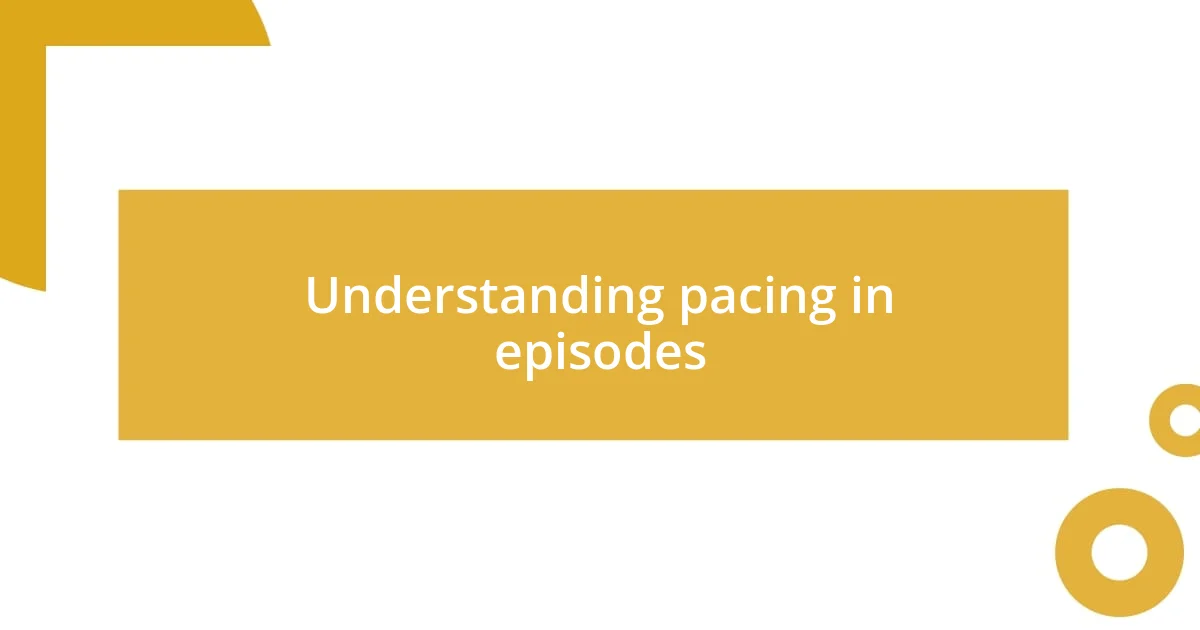
Understanding pacing in episodes
Pacing in episodes is like the heartbeat of storytelling; it dictates the rhythm and flow of the narrative. I remember watching a series where a sudden shift in pacing made the plot twist feel even more shocking. It left me questioning—how does the choice of pacing affect our emotional connection to the characters?
When a show moves too quickly, it can feel overwhelming and leave viewers craving more depth. For instance, I once binge-watched a season where each episode was packed with action, but I found myself emotionally drained by the end. It’s fascinating how a slower pace can allow for reflection, giving us time to digest the storyline and truly connect with the characters’ struggles.
On the flip side, when episodes linger too long on a scene, the tension can dissipate, making the viewer impatient. This reminds me of a series that drew out a romantic tension for too many episodes, leaving me asking, “Will they or won’t they?” Balancing that tension with the right pacing can create a rollercoaster of emotions that keeps us coming back for more.
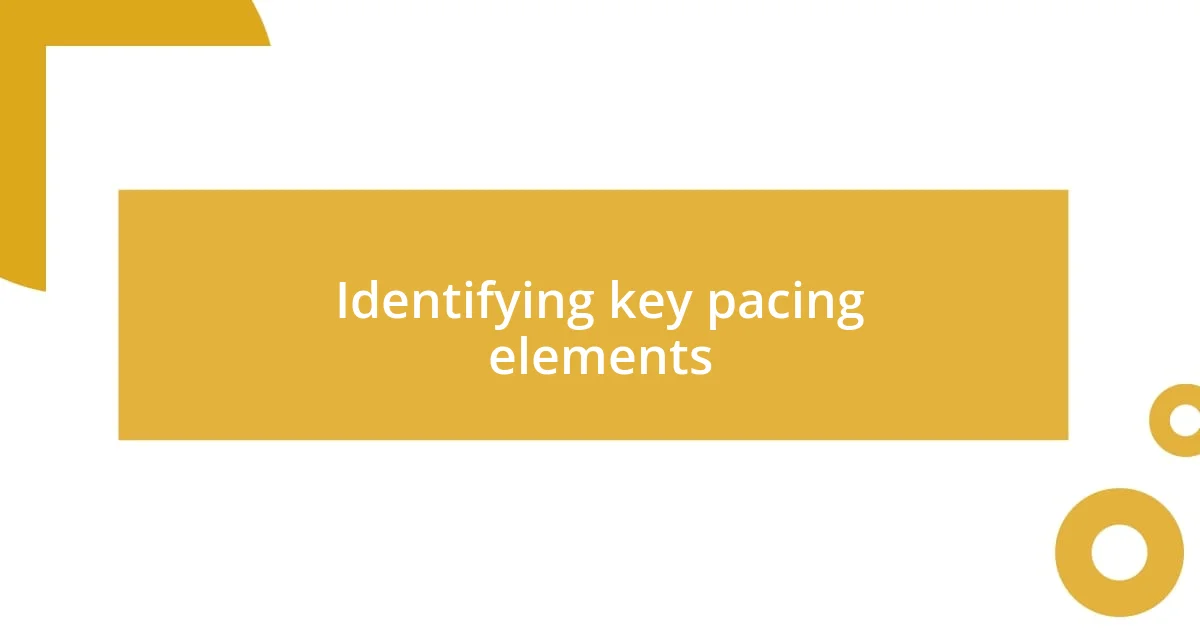
Identifying key pacing elements
When I think about key pacing elements in episodes, I often focus on how scene length and timing influence my emotional engagement with the story. For example, a heartfelt conversation between two characters might draw me in for several minutes if done right, allowing me to feel their connection and struggles. I vividly remember a show where a simple, lingering glance between characters added depth to their relationship, leaving me on the edge of my seat, and I felt as if I was part of their world.
To identify pacing elements, consider these aspects:
- Scene Length: How long does the show stay on a particular moment?
- Cutting Techniques: Are the cuts quick and jarring, or smooth and immersive?
- Dialogue Pace: Is the conversation fast and snappy, or slow and deliberate?
- Emotional Beats: Does the pacing allow for moments of reflection after significant events?
- Tension Build-up: How gradually does the show build suspense, and does it maintain a balance between tension and release?
By paying attention to these components, you can better understand how pacing shapes the storytelling experience.
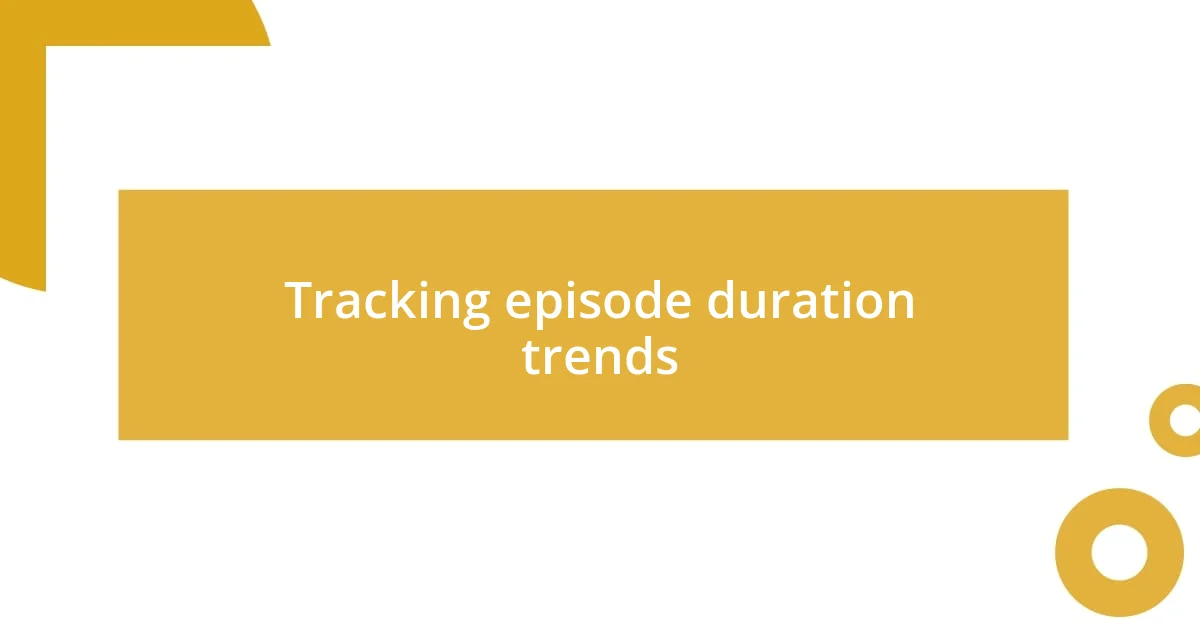
Tracking episode duration trends
Tracking the duration of episodes can reveal interesting trends about storytelling techniques across different series. For instance, I’ve noticed that many popular dramas average about 50 minutes for a standard episode. That extra time allows for deeper character development, which I find crucial in making emotional connections. When I binge-watched a critically acclaimed series with 60-minute episodes, each felt like a mini-movie—an immersive experience that left me eager for the next.
However, not all shows stick to this formula. I’ve seen comedies dip to around 22 minutes, delivering punchy laughs while keeping the pacing brisk. This shorter duration can create a delightful, snack-sized viewing experience that fits well into busy days. I recall a moment when I watched a quirky sitcom—its snappy episodes felt addictive, making it easy for me to watch several in one sitting without feeling drained.
That being said, it’s essential to stay aware of how these trends can impact viewer expectations. Many viewers, like me, may find themselves leaning towards shows that embrace longer formats for richer story arcs. In contrast, a series that adopts a “less is more” strategy with shorter episodes can still captivate, particularly if its humor or emotional resonance is sharp. Keeping an eye on these trends helps me appreciate how episode duration influences pacing and, ultimately, viewer engagement.
| Show Title | Average Episode Duration |
|---|---|
| Drama Series | 50 minutes |
| Comedy Series | 22 minutes |
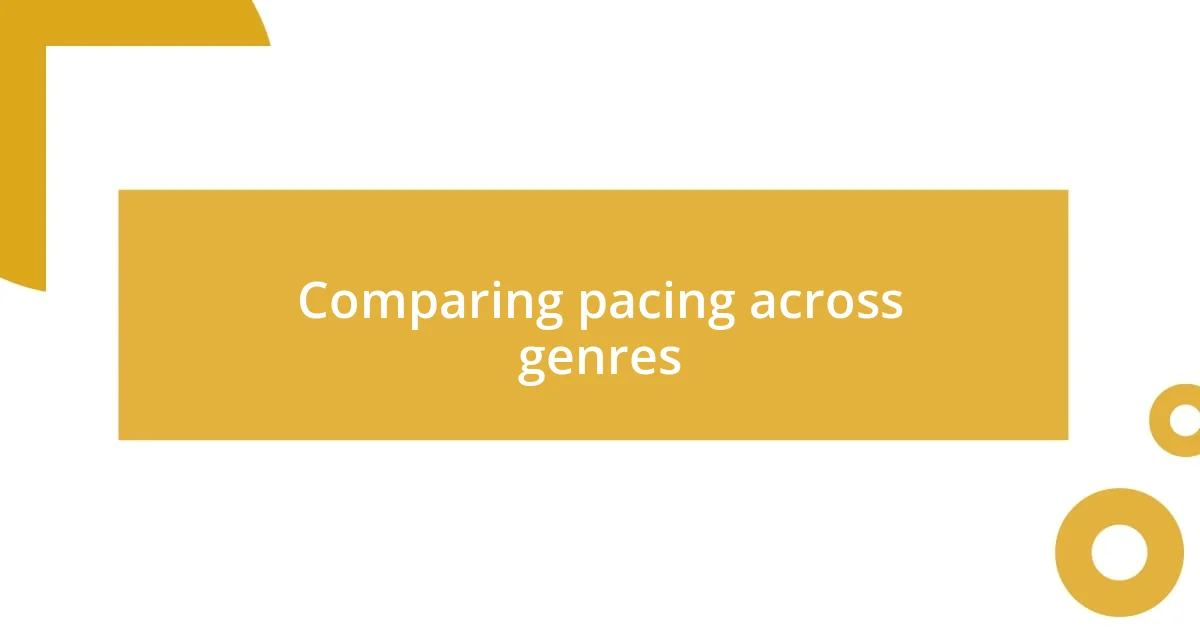
Comparing pacing across genres
When comparing pacing across genres, I often marvel at how it shapes our viewing experiences so differently. For instance, a suspense thriller might plunge us into rapid-fire scenes that keep our hearts racing, while a historical drama could stretch moments to let the weight of history sink in. Do you ever notice how you catch your breath in between the sharp edits of a horror film, while a romance pulls you in with long, tender pauses? It’s fascinating how each genre dictates not just what we see, but how we feel.
I distinctly remember watching a fantasy series with epic battles that seemed to last ages. The pacing was intentionally slow during the buildup, with each minute laden with tension that ultimately exploded into frenetic action. I found myself gripping the armrest, almost wishing for the slower moments to pass more quickly, highlighting how the shifting pacing heightens our emotional investment. Similarly, in a lighthearted romantic comedy, the pacing thrives on quick exchanges and snappy repartees that had me laughing in rapid succession, leaving me with a different kind of satisfaction—lighter, but equally engaging.
In my experience, animated shows often play with pacing in unique ways. I recall an episode of one that seamlessly blended action and comedy, switching from fast-paced chase scenes to slower, reflective moments that left me chuckling and pondering all at once. The juxtaposition felt intentional, allowing for both excitement and contemplation. Doesn’t it make you think about how our emotional responses vary not only by what we watch but also how it’s delivered? That’s the power of pacing across different genres—it’s a conductor guiding our emotional orchestra.
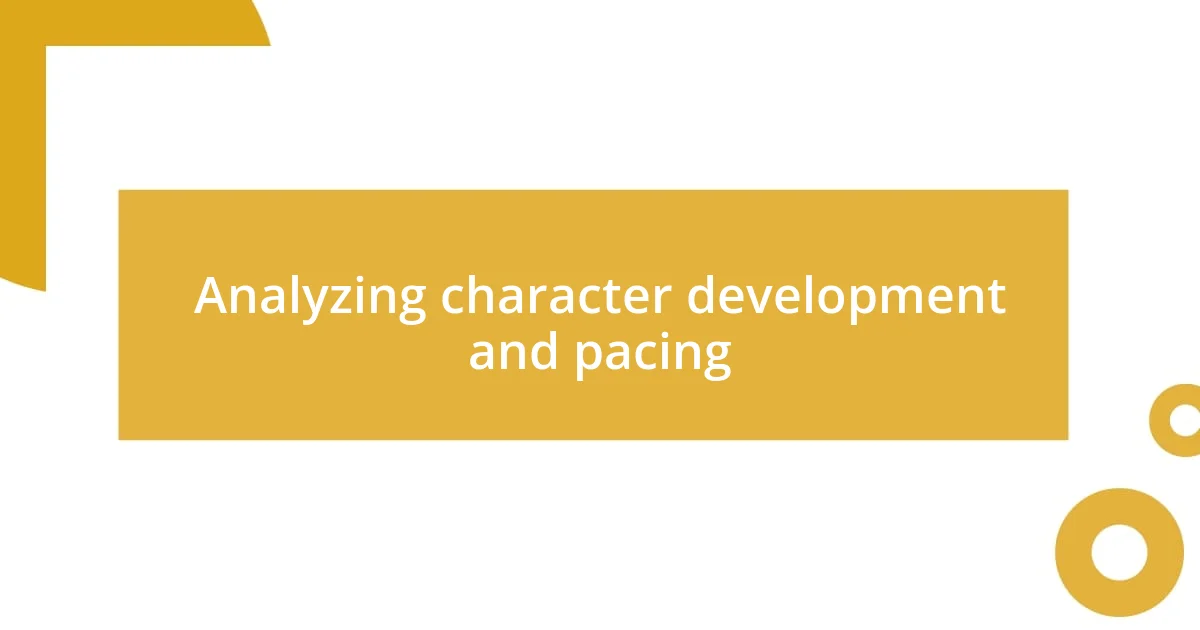
Analyzing character development and pacing
Analyzing character development alongside pacing truly reveals how narratives unfold in meaningful ways. I recall a gripping drama where the characters’ growth mirrored the episode’s pacing perfectly. Certain pivotal moments felt drawn out, allowing me to really connect with their struggles. Have you ever felt your heart race during a character’s transformative moment, only to feel it slow into a contemplative pause? That’s pacing at its best—it’s like the showrunners are inviting us to digest their growth alongside them.
Moreover, I’ve observed that slower pacing often benefits character arcs in genres like family dramas. For instance, in one particular episode, a heartfelt conversation between a father and son unfolded gradually. As they shared their vulnerabilities, I found myself reflecting on my own relationships, almost feeling like I was part of the conversation. It’s as if time slowed, inviting deeper emotional investment. It makes me wonder: do we appreciate characters more when their flaws and growth are given space to breathe?
On the flip side, I’ve watched thrillers where characters evolve under the pressure of escalating tension. In one such series, the pacing left no room for hesitation; every second was loaded with urgency, causing characters to make transient yet impactful choices. I realized that while some character growth can feel rushed, it also sparks an adrenaline-fueled connection. How intriguing is it to think that pacing can either fortify our bond with a character or leave us breathless, rooting for them to succeed despite barely scratching the surface of who they are? It’s a delicate balance, but one that offers rich opportunities for engagement.
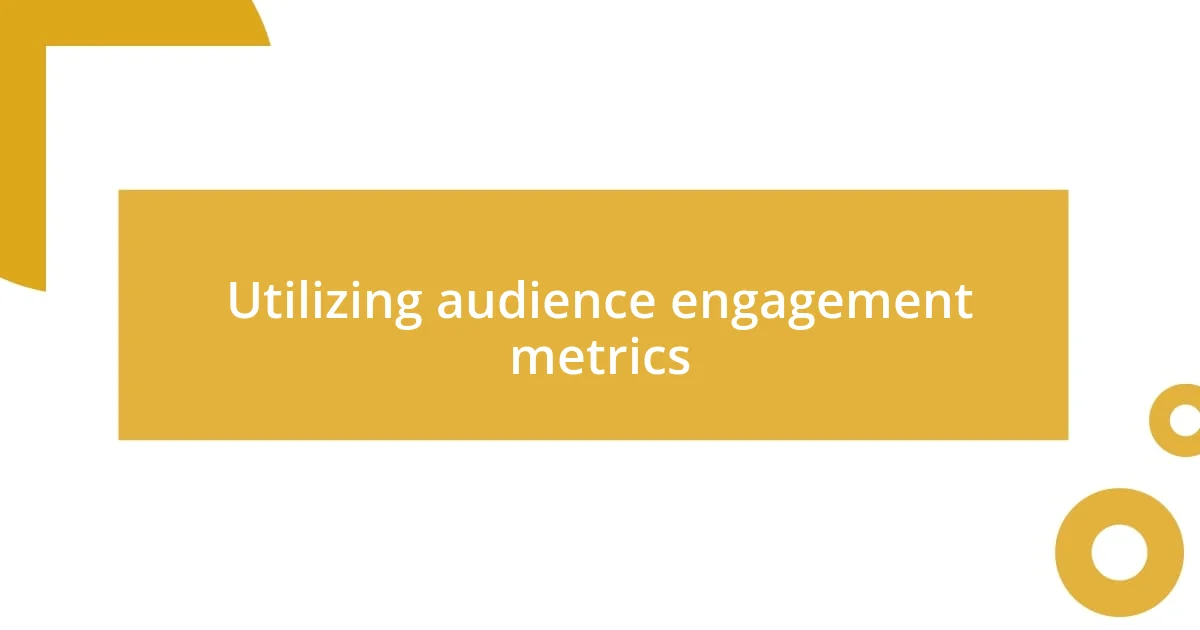
Utilizing audience engagement metrics
When it comes to utilizing audience engagement metrics, I find it crucial to analyze how viewers respond to pacing. For example, during one show’s climactic episodes, I noticed that viewer drop-off rates spiked during slower scenes. This data not only sparked my curiosity but also made me reflect: do viewers want constant action, or can they appreciate quiet moments for character development? It seems that engagement is multifaceted, and understanding these nuances can elevate how we approach pacing.
I often turn to social media reactions as a valuable metric, especially during premieres. One time, after watching a high-stakes drama, I saw a flurry of comments praising the quick pacing of key scenes. It reminded me of how collective audience sentiment can dictate what works and what doesn’t. I wondered, how do our reactions intertwine with pacing? When a scene drags or rushes, does it evoke a shared frustration or excitement that influences future episodes?
In my experience, utilizing audience feedback tools—like polls and surveys—can yield fascinating insights. I vividly recall a poll conducted after an episode that had a mixed pace: viewers were split between loving the tension-building moments and desiring more action. This direct input not only informs creators about audience preferences but also shapes how pacing evolves in subsequent episodes. Doesn’t it make sense that when we lean into audience reactions, we create a more engaging viewing experience that resonates on a deeper level?



